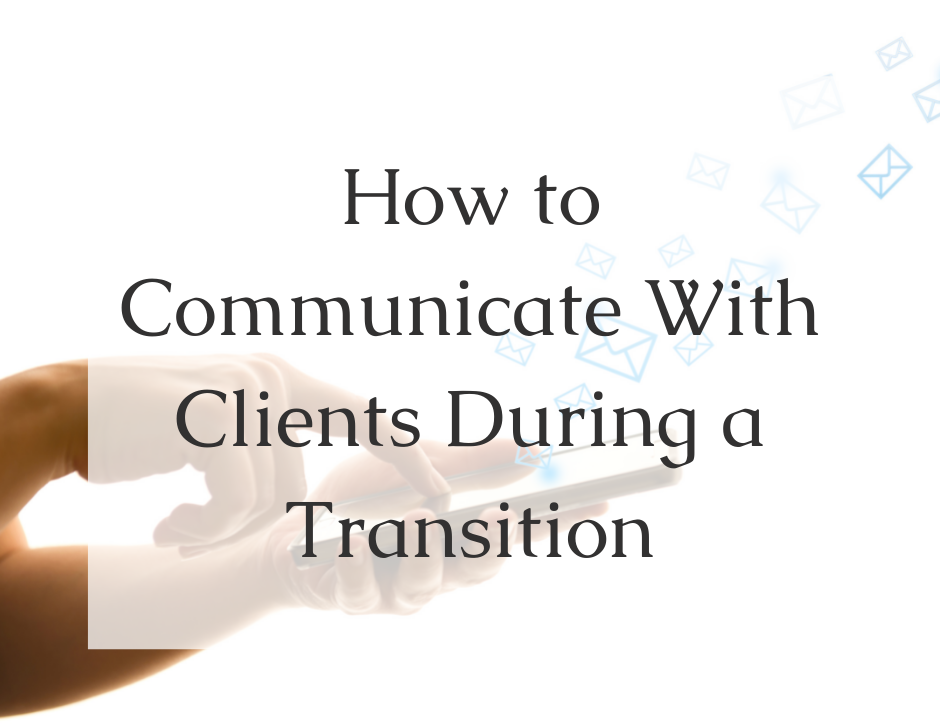Transitions are disruptive. There’s no way around it. The amount of preparation that goes into the process can be overwhelming, especially if you’re starting an RIA. Some advisors plan for years before they make a move. While you have as much time as you need to wrap your head around the process and become comfortable with your decision, your clients don’t have that same luxury. Oftentimes, they’re not being told about your decision to switch firms until it’s already been done. That’s why it’s important that you handle those conversations with care and confidence.
How do you handle a conversation with care and confidence when numerous conversations need to occur as quickly and efficiently as possible? The answer is preparation. The key is to identify the important information, plan its distribution, and practice.
In this article, I break down some of the material that I believe can be valuable when speaking to clients about a move. Starting with the distribution methods then getting into the subject matter.
When it comes to distribution of important information, there’s a lot to consider. Are you able to reach out to clients directly? What are you legally allowed to say to them? How do you want them to hear from you? Is there a need for speed?
In every transition I always start with the same question. “Have you had your current contract reviewed by an attorney?”. If the answer is no, I refer you to one. The legal aspect of a transition is extremely important to understand. Many employers have non-solicitation or non-compete clauses in their contracts. The last thing you want to do is violate a contract and put your new business in jeopardy before it ever really gets off the ground.
A good attorney should be able to examine the terms, financial obligations, and legal ramifications of your employer agreement. They should also be able to discuss the Broker Protocol and the application and allowances associated with it. It’s important to know what can legally be said to clients before planning what to actually say.
Once the legal conversation is out of the way, and assuming you’re clear to communicate freely with clients, the next consideration is how to deliver the message. In some cases, depending on the firm, you’ll have the opportunity to speak with clients before they leave. This is usually the case for firms that request notice prior to resignation. In other cases, you’re forced to give notice and resign at the same time, and there’s often a mad rush to contact clients before the households are reassigned to other advisors at the firm. In either case, there are benefits to sending an email communication to clients before hitting the phones.
A mass email to clients can serve many purposes. First, it assures that the first communication with clients is from you and no one else. Second, it offers an opportunity to pass along your new contact information, so clients are not continuing to reach out to your former firm. Third, it provides a way to distribute material information, like the RIA’s ADV and privacy policy. Two documents that are required to be delivered to clients upon establishing new accounts. Lastly, it provides a platform to articulate all the things a client should know about the situation. You can reference it in client conversations. In theory, it could cut down on conversation time, eliminate the need for in-depth explanations, and provide some backup when you’re stressed, tired, and super busy.
Whether you choose to use email as a form of communication or rely solely on phone calls to clients, there are certain subjects that should be addressed. I’ve put together a list of best practices.
Best Practices
- Start with reasons for starting (or joining) the new firm
- Explain your custodian choice
- Provide new contact information
- Confirm the existing client information on file
- Request missing documents
- Manage expectations and ask for patience
Start With Reasons for Starting (Or Joining) the New Firm
Naturally, when you pick up the phone to call clients during a transition, the first thing you need to do is explain why you left your former firm to start (or join) another one. The easiest way to articulate this information is to make a list of reasons the move benefits you and the client. Some that come to mind are the freedom and flexibility of being a business owner and decision-maker in the firm, and the ability to research, test, and select the best technology and resources. Benefits to the client include the elimination of conflicts of interest and a possible reduction in fees. Many advisors I’ve worked with had clients who were excited about the change and wondered what took so long for it to happen. Being able to exude confidence and excitement is key to making clients feel confident and excited as well.
Explain Your Custodian Choice
It’s important for you to explain your choice of custodian, especially if you’re leaving a firm with a big name to start an RIA with a more personal brand name. Sometimes clients don’t always understand the relationship between the RIA and the custodian with the recognizable name and reputation. They want to know that their money is being protected. Explaining that affiliation up front can go a long way in easing fears and establishing understanding and acceptance of the situation.
Provide New Contact Information
Providing new contact information to clients is arguably the most important part of the initial conversation. Humans are creatures of comfort. We get used to doing things a certain way and it’s often difficult to change habits. If a client is used to calling your office line to reach you, they’re going to continue to do so until told differently. They probably have email addresses saved that autofill when they start typing. It’s imperative that those habits be addressed and adjusted. The last thing you need is clients reaching out to your former employer and getting someone on the phone who controls the narrative of the situation.
Providing new contact information can also include marketing materials. There’s an opportunity to direct clients to your website where they can read all about the new company and see just how much effort went into the decision and preparation process.
Confirm the Existing Client Information on File
In some cases, a transition is going to require the collection of client data that was not eligible to be taken by you in the move. Whether that collection takes place on the first call, or the responsibility is passed on to another person, the need for it should be explained to the client. Assuming data was allowed to be taken and you have the information on file, it’s still recommended that you confirm some of that information with the client before using it.
If the plan is to use an e-signature platform, I suggest confirming the client’s email address and cell phone number. All e-signature platforms utilize email addresses, and most require the use of a cell phone that can receive text messages for authentication purposes. By confirming those two pieces of data, process delays can be avoided.
It’s also advisable to confirm the client’s legal and mailing addresses. If they’re incorrect when the accounts get opened, the custodian will flag them and require additional paperwork. Something that can easily be avoided.
The last thing I highly suggest confirming is beneficiary information. Like emails, phone numbers, and addresses, beneficiaries can change over time and tend to be a sensitive subject in some situations. I’ve had several advisors fail to confirm the information only to be met with frustration when a new account is opened with beneficiaries that a client no longer wants.
Request Missing Documents
Oftentimes, there are external documents needed from clients. Examples include statements, voided check copies, trust documents, and organization formation documents. By knowing ahead of time what you need from the client, you can address the requirement on the initial call and avoid having to make additional requests in the future.
Manage Expectations and Ask For Patience
Managing expectations is crucial. Clients may not intuitively understand what’s going on behind the scenes of a transition. If they’re told that paperwork is coming, they’re going to expect it immediately. By providing a timeline for the delivery of paperwork, instructions for how to complete it, and a timeframe for the actual asset transfer, you can be proactive instead of reactive.
I also suggest pointing out that you’re having the same conversation with every single client, that response times may be delayed, and that things should go smoothly but that additional information might be needed. By specifying who the clients should reach out to with questions, you can avoid unnecessary conversations during a busy time. It’s best to stress the importance of the relationship and ask for patience. Most people are happy to oblige and thankful for the transparency.
The Takeaways
It might seem like a lot to discuss with clients on one call, but you know your clients better than anyone and can adjust your conversations accordingly. However, having a list of items and possibly even a script in front of you can go a long way in making you feel comfortable and confident. Something clients will certainly pick up on and respond to.



